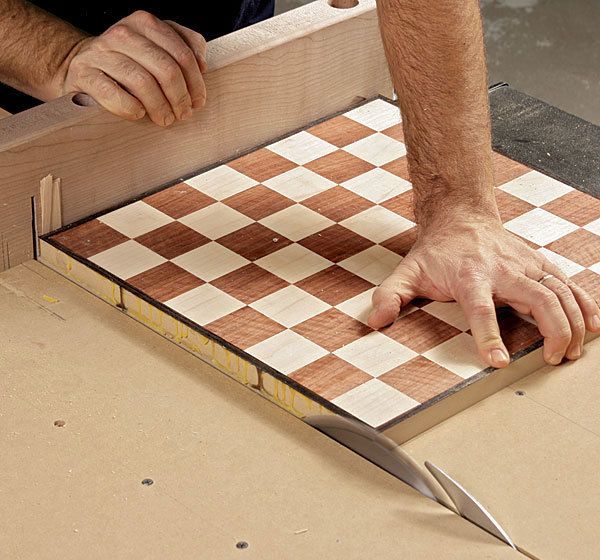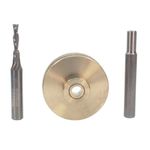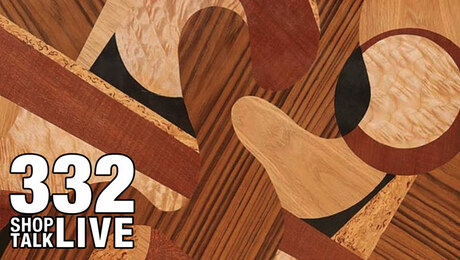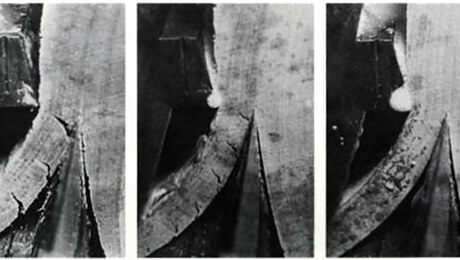
Synopsis: At some point in your woodworking life, you’ll probably make a chessboard. The classic parquet pattern adds fun and function to an ordinary table. Many woodworkers are tempted to try gluing up thick squares of solid wood, but according to Craig Thibodeau, veneer is the way to go. It is easy to cut accurately, easy to apply to an MDF substrate, and comes in hundreds of species and grain patterns. Even if you’ve never used veneer before, just follow these step-by-step directions and you’ll be surprised by how fast and easy it is to use. You’ll need veneer, lots of masking tape, a veneer saw, and a substrate.
From Fine Woodworking #219
Video: Learn how to tune and use a veneer saw
At some point in your woodworking life, you’ll probably make a chessboard. The classic parquet pattern adds fun and function to an ordinary table. And a stand-alone chessboard makes a great gift.
If you haven’t worked with veneer, you may be tempted to make your game board from thick squares of solid wood. Don’t. You’ll have to contend both with wood movement and weak end-grain joints. Veneer is much easier to cut accurately, and is easy to apply to a stable MDF substrate. Also, veneer is available in hundreds of beautiful species and grain patterns. By the way, the following technique works for other parquetry patterns, too, such as diamonds.
More from FineWoodworking.com |
Standard chessboard squares range from 2 in. to 2 1⁄2 in. square, but you can size the squares to fit the chess pieces you have on hand.
Veneer taping 101
Because of the V-groove that a knife or veneer saw leaves behind, it’s important to keep track of your “glue face” and “show face,” as they are called. When cutting the veneer, keep the glue face on top, which guarantees that the lower edges of all of your cuts meet cleanly on the opposite show face. And generally, as you assemble any veneer pattern, you bring the pieces together by using blue masking tape on the glue face, and then thin moisture-activated veneer tape goes on the show face. When the veneer tape is dry, you peel off the masking tape and you are ready to apply the veneer to a substrate.
Simple jig ensures accuracy
Start by making a straight block of hardwood or plywood roughly 3⁄4 in. thick by 20 in. long. Rip it precisely 2 in. wide, and stick coarse sandpaper to the bottom to help keep it in place. This will be the guide you use to cut the strips of veneer into equal squares, so make sure the sides of the jig are truly straight and parallel.
For the full article, download the PDF below:
Fine Woodworking Recommended Products

Bahco 6-Inch Card Scraper

Whiteside 9500 Solid Brass Router Inlay Router Bit Set























Log in or create an account to post a comment.
Sign up Log in